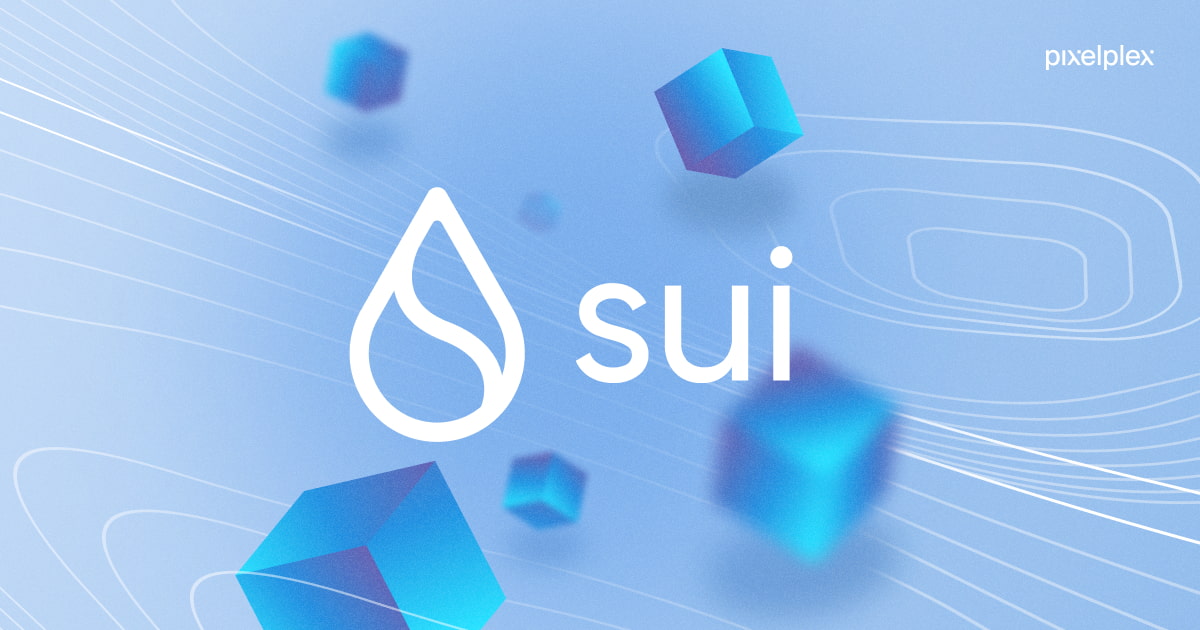Blockchain Technology and Sui Cryptocurrency: An Ambitious Undertaking by Meta
Sui is a Layer 1 (L1) blockchain that was made by Mysten Labs to serve decentralized applications that are sensitive to latency. Aptos and Blockchain Sui both use the work of Diem, which was a blockchain platform from Meta Corporation that didn't work out. In particular, a changed...

Sui is a Layer 1 (L1) blockchain that was made by Mysten Labs to serve decentralized applications that are sensitive to latency.
Aptos and Blockchain Sui both use the work of Diem, which was a blockchain platform from Meta Corporation that didn’t work out. In particular, a changed version of the Move language made for Diem was used to write the Sui code.
What is Sui?
The people who made Sui want it to be a general-purpose network for Web3 with a high bandwidth, fast and cheap transactions, and an easy-to-use interface. The goal of Mysten Labs is to make a platform for running high-performance, decentralized applications.
In the whitepaper and technical documentation, there is a lot of information about the Sui architecture. The project has its own programming language called Sui Move. This language is a modified version of Move that was made for the Diem project. In other blockchains, the basic unit of storage is an account. In Sui, the basic unit of storage is an object, which is made by smart contracts and managed by them. An object can be any kind of asset, and each one has a unique ID, owner, and property that says whether it can be changed or not.
Blockchain Sui has a record of how each thing came to be from the moment it happened. If objects’ histories don’t overlap, transactions with them can be done in any order or even at the same time. With this feature, Sui can handle groups of transactions at the same time without the risk of spending the same amount of money twice.
Because of this, the network’s bandwidth can be scaled horizontally, and the network’s overall performance depends only on how many nodes are processing transactions. In tests, the Sui blockchain was able to handle more than 120,000 transactions per second with a latency of about 2 seconds on average.
How Sui Blockchain Works
The Proof-of-Stake (PoS) consensus algorithm is used by the Sui blockchain. Transactions are handled by a group of validators, which is made up of the currently active full nodes and changes every 24 hours. At the end of October 2022, the testnet had 4 validators and more than 3600 active nodes.
How transactions are handled depends on whether they involve an object with a single owner (any kind of asset) or a “common object” (for example, public smart contracts).
The first kind of transactions are things like sending coins, making NFTs, and voting. The Byzantine Consistent Broadcast mechanism is used to handle these kinds of transactions through a simplified Fast Pay process. There are four steps:
- The transaction is sent to the node, which sends it to the validators by “propagating” it;
- Validators vote to confirm the transaction and send the result to the sender;
- The sender makes a certificate with at least two-thirds of the validators’ signatures on it;
- The certificate is sent to people who can verify it. The transaction is then added to the blockchain.
In this process, validators don’t try to come to an agreement with each other. This makes the time it takes to process a transaction much shorter.
On the other hand, the process for doing transactions with shared objects has one more step: using the Sui Consensus Engine, validators look for consensus. It is made up of two parts.
- Narwhal is a high-capacity mempool, also called a “waiting room” for unconfirmed transactions. Its job is to make sure that data submitted for confirmation is synchronized and available to validators.
- Bullshark, or the older Tusk solution, is a consensus protocol that uses both Directed Acyclic Graph and Byzantine Fault Tolerance technologies. Bullshark is unique in that validators don’t have to share information with each other in order to reach a consensus.
This process gives the network both high performance and resistance to failure, since a large number of bad validators won’t slow down the network like it does in PoS blockchains that are already in use.
Project Prospects
Alonso de Gortari of Mysten Labs said during a Q&A session in July 2022 that the company is planning a public token sale and that the mainnet and SUI coin launch is set for the end of the year. But since then, the project team hasn’t said anything else about this subject or made any announcements.
On its website, the Sui Foundation, a new non-profit organization, announced a grant program for app developers in the Sui ecosystem. Teams that come up with solutions for a wide range of uses, such as social networks, games, payment systems, and financial and legal services, will be able to get grants between $10,000 and $100,000.
